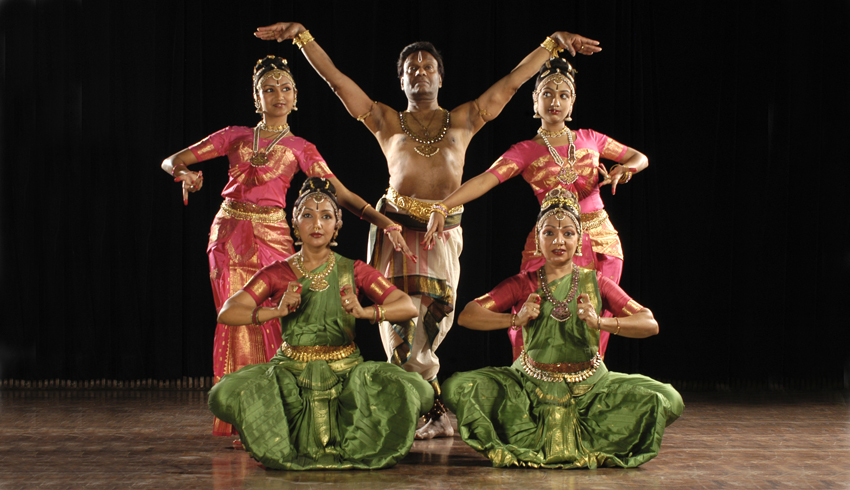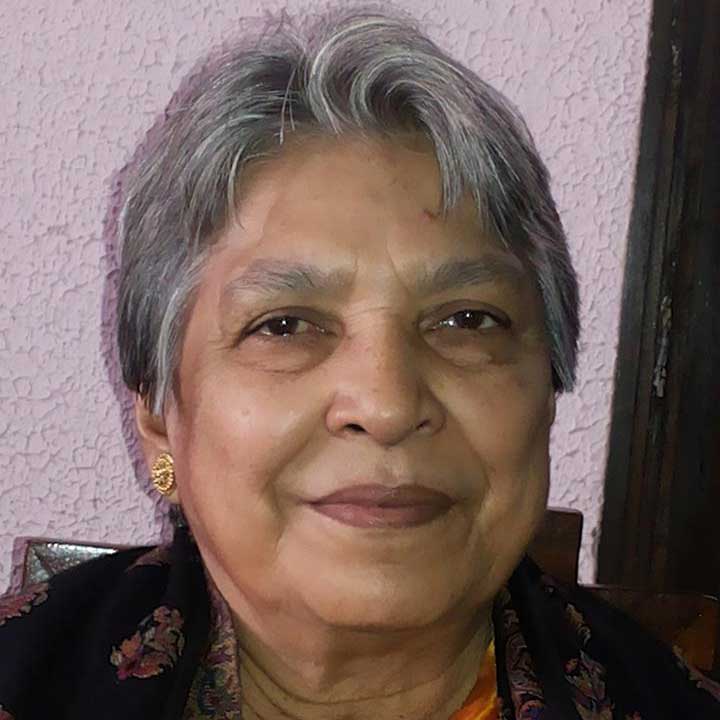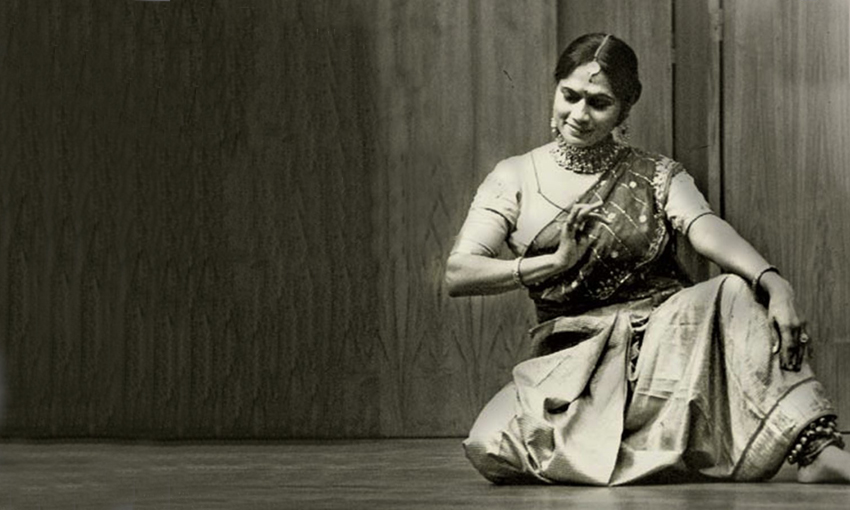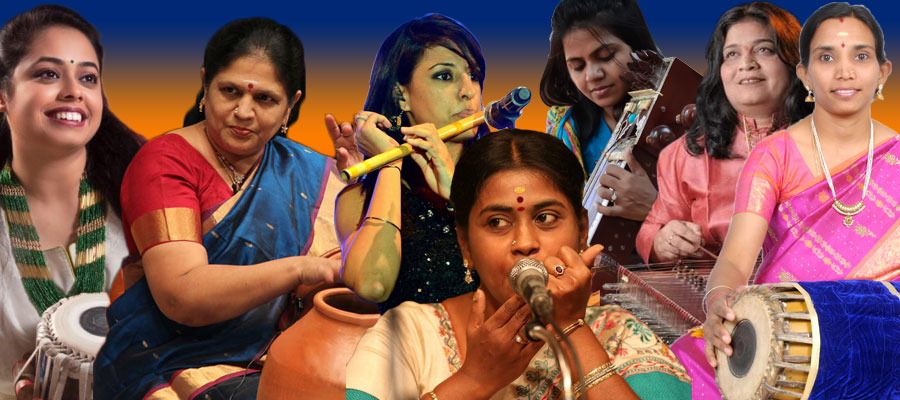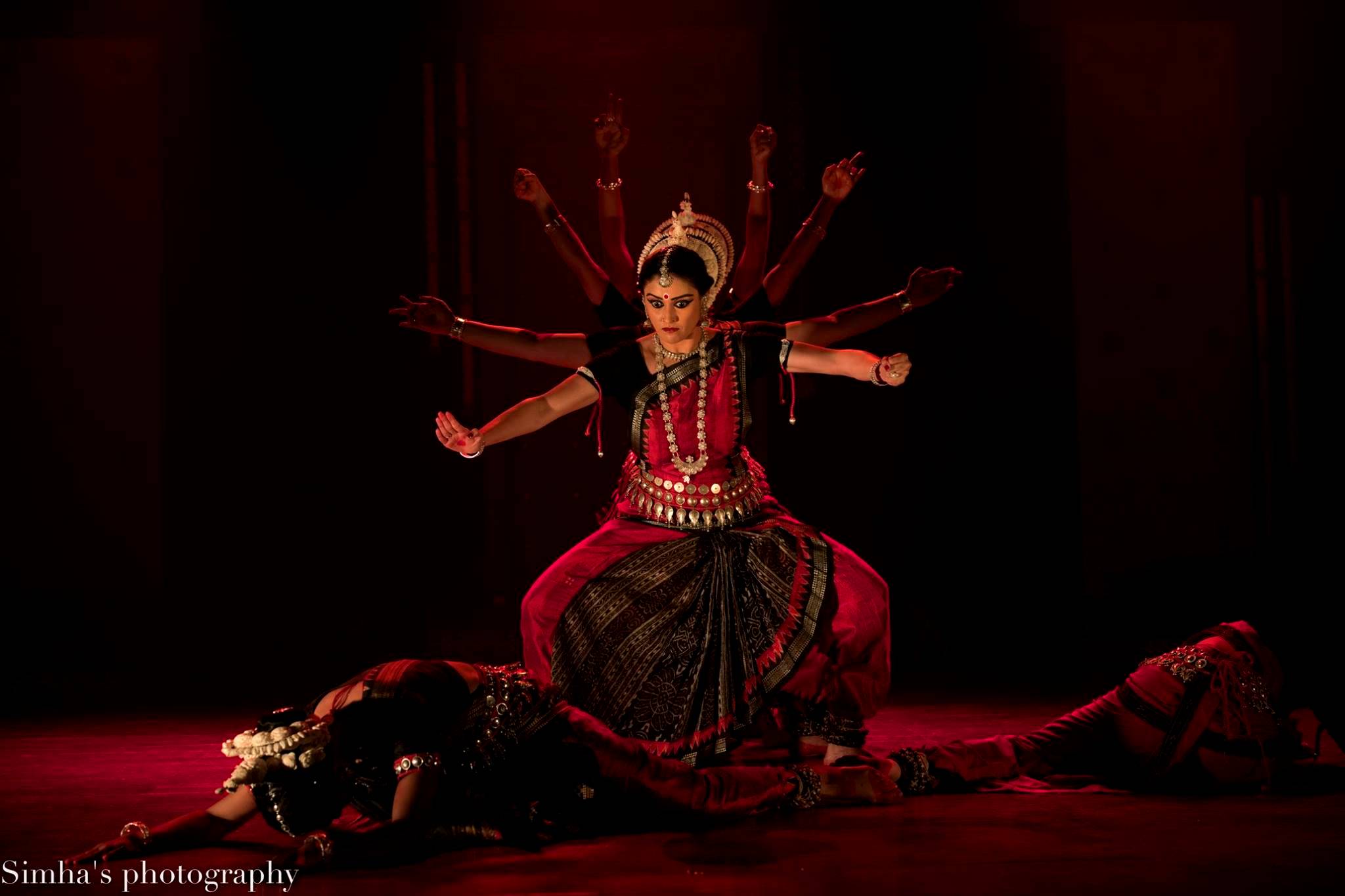In an exclusive interview with the doyen of Kuchipudi Dance, Dr Raja Reddy- who besides inducting his entire family into serious dance, has also trained innumerable students for the world stage- he provided a brief insight about himself. His name is synonymous with dance in general and Kuchipudi dance in particular. Accolades are incapable of gauging his greatness.
Dr. Raja Reddy – About his vision for upcoming dancers, he said:
Our Country Bharat is known for Dance which is considered as the divine creation of Lord Shiva & Parvati. Earlier people from across the globe used to come here only to learn dance and continue to do so now. They come to us to learn our traditional classical dance. Students who are learning dance should keep in mind the greatness of our Country and after learning they should keep in mind the physical perfection, perfection of the hand gestures and appropriate expressions coupled with a sense of rhythm it entails. During earlier days the students used to stay with the Gurus under Guru Shishya Parampara and observe, follow & learn from them by residing in the Gurukul (Guru’s house). But nowadays kids have to study hard and equip themselves properly to face cut-throat competitions for survival in the world outside and they cannot devote much time to dance. But whatever time they can they should be very particular about their devotion, dedication & sadhana to become a perfect dancer, because Indian Classical dance is very unique unlike any other dances across the globe. They should retain the greatness & purity of Indian Classical dance and carry on the legacy of this rich culture to the future.”
I wondered how he has managed to fulfil his duty of carrying on the Parampara of the arts he has learnt.
His answer: We, Raja & Radha Reddy came to Delhi on a scholarship from Government of Andhra Pradesh to learn Choreography. After learning choreography we worked on the modern stage presentation of our traditional Kuchipudi items. We systematised the presentation of dance right from entry to the conclusion for stage presentation according to the present times. We conceptualised the performance with an invocation to Lord Ganesha & conclusion with Tarangam in which we dance on the rim of a brass plate.
Radha & I are completely dedicated to our Kuchipudi Classical dance and to impart our knowledge to the generations to come we started Natya Tarangini – Performing Arts Centre in 1976 wherein we were teaching Kuchipudi classical dance by keeping the parampara intact and also adapting according to the audience of present times. We believed that the Kuchipudi dance has to flow along with aesthetic sensibilities of the changing times. Classical dances provide an experience of Bharat which was, is and will be. We change the presentation of the dance by keeping the technique intact to connect to the audience in a better way. Artists should adapt themselves according to the times. To keep our art alive we teach our student personally. Radha and I were lucky as husband & wife because we were equally interested, passionate & dedicated to this divine dance. When we both come on the stage and dance it attains completeness, something like Tandava (majestic)–Lasyam (feminine); Prakriti –Purusha; and we were able to perform characters like Shiva-Parvati; Rama-Sita; Krishna-Radha. Seeing our dedication Radha’s younger sister Kaushalya, who was living with us in Delhi when she was young, also joined us & we became a threesome. We were blessed with two lovely daughters who also gradually joined us in the journey of our dance – in practice, performance & teaching. So now we are the only family of five as Panchendriyas completely dedicated to Kuchipudi classical dance carrying forward this legacy of our rich Indian culture.
What kind of research do you do before embarking on a new work was my question..
Presenting a story is possible once we know the details of the story and the characteristics of the roles we are going to present. We prepare ourselves with thorough research of the characters involved in the story for their movements, vocal tone, expressions so that we can choreograph the vocal tone, movements, expressions according to the character and then we set the rhythm of the storyline for stage presentation.
[adrotate group=”9″]
Do you cross-check your research?
Yes, we do check & crosscheck our research before choreographing our presentation. We practise and if we are not satisfied with ourselves we do even more research and try to improvise till we are 100% satisfied that we are presenting the characters of the storyline truly.
Into how many categories would you divide your work from the 60s to 2020.
1960-1970: Learning
We started learning in early 60’s the traditional Kuchipudi dance from our Guru Vedantam Prahlada Sarma at Elluru & also at Kuchipudi village Guru P V G Krishna Sharma and then we learnt Choreography at Delhi from Dr. Maya Rao.
1970- 1980: Performing
After learning traditional Kuchipudi dance & choreography we started performing all over India & different parts of the world. We had started choreographing the traditional Kuchipudi dance items for the presentation to the modern stage & audience.
1980-1990: Started teaching
In 1976 as advised by great scholars to keep our ancient traditional dance alive and to pass on the same to future generations we started our Natya Tarangini-our institute to teach Kuchipudi Classical dance. We continued with teaching, performing & choreographing new dance items.
1990-2000: Festival of Music & Dance (Parampara Series)
Parampara is an unusual convergence of the bountiful arts of music and dance in a new format wherein performers of repute bring to life the essence of Indian philosophy and culture. Parampara in Sanskrit the word literally means uninterrupted series of succession. Keeping this thing in our mind we started in 1997, ‘Parampara Series’ the first of its kind festival of Dance & Music in Delhi, bringing in together various classical dance forms, vocal & instrumental music, by stalwarts and stars of classical and contemporary dance and music both on a National and International scale and repute. Here, thousands of people have witnessed the magnificent art of nearly a hundred artists making the festival and its organizers one of the key cultural players in Delhi.
We have been organising this festival every year for the past 23 years even pandemic did not stop us from organising as we took this opportunity to go online this year with the 24th Edition.
In 2011, we brought together international stalwarts in Delhi`s capital such as USA`s prime dance company Paul Taylor Dance Company, Legendary Jose Porcel of Spain, Whirling Dervishes of Turkey and Moscow Classical Ballet, Russia. Till date, classical artists of this calibre have not been presented by any organization in India.
[adrotate group=”9″]
What major changes have you found in your outlook and work? Could you give an example? Or are you adhering to the same repertoire you started out with?
Dance is like a river where the old water rushes to merge into the ocean and the new water flows into the river but the banks of the river remain intact. We have to change the presentation of our dance according to the current times keeping the grammar of the dance style intact. We learnt Kuchipudi in the traditional way. Earlier we were performing only for South Indians who understand Telugu the language of our Kuchipudi dance, but after coming to Delhi we realised that to connect with the audience of North India; Hindi speaking audiences we have to adapt to a language according to them.
We were advised by Dr. Shiv Ram Murty, founder of The National Museum & writer of ‘The Art of India’ that you are in North India and you should choreograph & present dance items in this region’s language by strictly keeping the grammar of Kuchipudi dance intact. It has also been mentioned in one of the Vruttis of Natya Shastra that when you move from your region to another region you have to choreograph according to their regional language and music but must keep the dance style intact. We decided that Kuchipudi dance should adapt itself to the aesthetic sensibilities of the changing times.
We choreographed excerpts from Tulsidas Ramayana, Meera Bhajans & items on Sufi musical songs – Saanson ki Mala, Chaap Tilak, etc. Pt. Ravi Shankar ji gave us his Hindustani Music composition – Tarana. When we presented this item and he saw our performance he exclaimed it seems I composed this specifically for Kuchipudi dance only. Late President Shri A. P. J Abdul Kalam a great scholar himself has written songs in Tamil & English. On his request, we choreographed his songs ‘Wisdom Tree’ & ‘Vision of India’ in Kuchipudi Dance.
[adrotate group=”9″]
How is your style of Kuchipudi different from other styles?
Kuchipudi dance is a combination of ancient temple dance and theatre form -YAKSHAGANAM, being presented through the ages in Teluguland and other states in South India. Kuchipudi Natyam is a living link to our ancient heritage (of dance & theatre) where art is ageless, culture is borderless & values are timeless. Kuchipudi dance is a unique style amongst all the dance styles. It is a combination of Tandavam (majestic) & Lasyam (feminine -lyrical), Natyadharmi (conventional) & Lokadharmi (realistic) along with four abhinayas – Aangika (body movements), Vaachika (Speech), Acharya (the costume) & Satvika (the sentimental). Kuchipudi dance is a way of telling universal stories in a unified forum for universal enlightenment. In Kuchipudi dance with the combination of Natyadharmi – conventional movements and Lokadharmi – realistic movements audience are more connected & this way with their expressions the artist evokes the rasa from the audience.
Among the other dance items of Kuchipudi dance – Tarangam is a special item wherein the dancer dances on the rim of the brass plate. It’s a display of exquisite virtuosity as the dancers execute intricate footwork patterns by dancing and weaving rhythmic patterns. It’s a saying that while dancing on the brass plate the dancer loses all connection with the earthly world and connects to the God directly.
The special feature of Kuchipudi dance is also its Vachikaabhinayam where the artists perform with hand gestures, facial expressions & with body movements along with vachikam (speech) and also in the dance-dramas the dancer enters the stage & reveals his or her identity it is called praveshadarvu.
[adrotate group=”9″]
Who are some of the pan Indian dancers who you think have maintained their aesthetics?
Kuchipudi dance: Shri Vedantam Satyanarayan Sharma who is very well known for his portrayal of Satyabhama in Bhamakalapam.
Bharatnatyam dance: Smt. Vyjanthimala Bali, Yamini Krishnamurthy, Kamla Lakshman, Padma Subramanyam & Couple Shanta & Dhananjayan
Kathak dance : Pt. Birju Maharaj, Late Durgalal, Kumudini Lakhia, Uma Sharma.
Odissi dance : Late Pt. Kelucharan Mohapatra, Late Sanjyukta Panigrahi, Sonal Mansingh
Mohiniyattam dance : Smt Kanak Rele, Smt. Bharti Shivaji, etc.
Manipuri dance: Singhajit Singh & Charu Singh
Kathakali dance: Sadaanam Balakrishnan, Kala Mandalam Gopi, Kala Mandalam Krishna Kumar
What would be your message for the generation next? Name a few of your students who have made it to the world stage.
Our advice to the next generation is to learn the dance & music with devotion & sadhana. They should aim for perfection in their art field so that they themselves are self-satisfied, only then they will get appreciation. An artist should always dance for oneself. They should not forget the greatness of our Bharat – which is known as Prachisudha or nectar of the east all over the world. Whenever they perform in other countries they should present items which will show the greatness of our Bharat. At a UNESCO conference in Stockholm after seeing our performance Chairman Bengt Hagar came on the stage and said, “What a beautiful dance! Whatever dances are there in the world are copies of Indian dance!” Young dancers should feel privileged to represent this heritage of India.
[adrotate group=”9″]
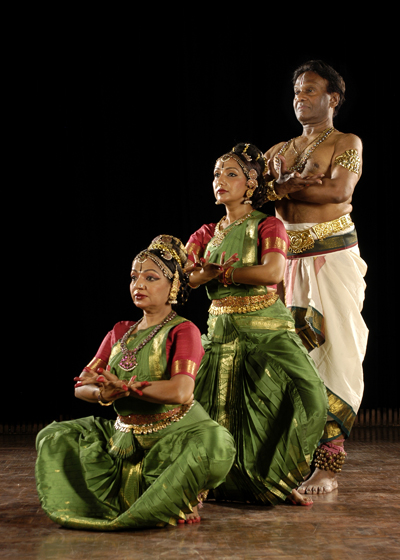
Kaushalya Reddy our first student, our daughters Yamini Reddy & Bhavana Reddy, Shallu Jindal & Shantarathi Mishra from Singapore are among the few artists who have made their names on the world stage and are solely dedicated to Kuchipudi dance only. There are many other students who have learnt from Kuchipudi from us & are performing on the world stage but are pursuing other dance forms.
How would you want to be remembered?
We Raja Radha Reddy & Kaushalya Reddy along with our two daughters Yamini Reddy & Bhavana Reddy have become the first family who has solely dedicated our lives to this divine Indian classical dance of Teluguland –the KUCHIPUDI CLASSICAL DANCE and have successfully brought this on the cultural map of the World. We want to be remembered as Gurus, Choreographers, Preservers of our Bharat’s rich cultural heritage.



